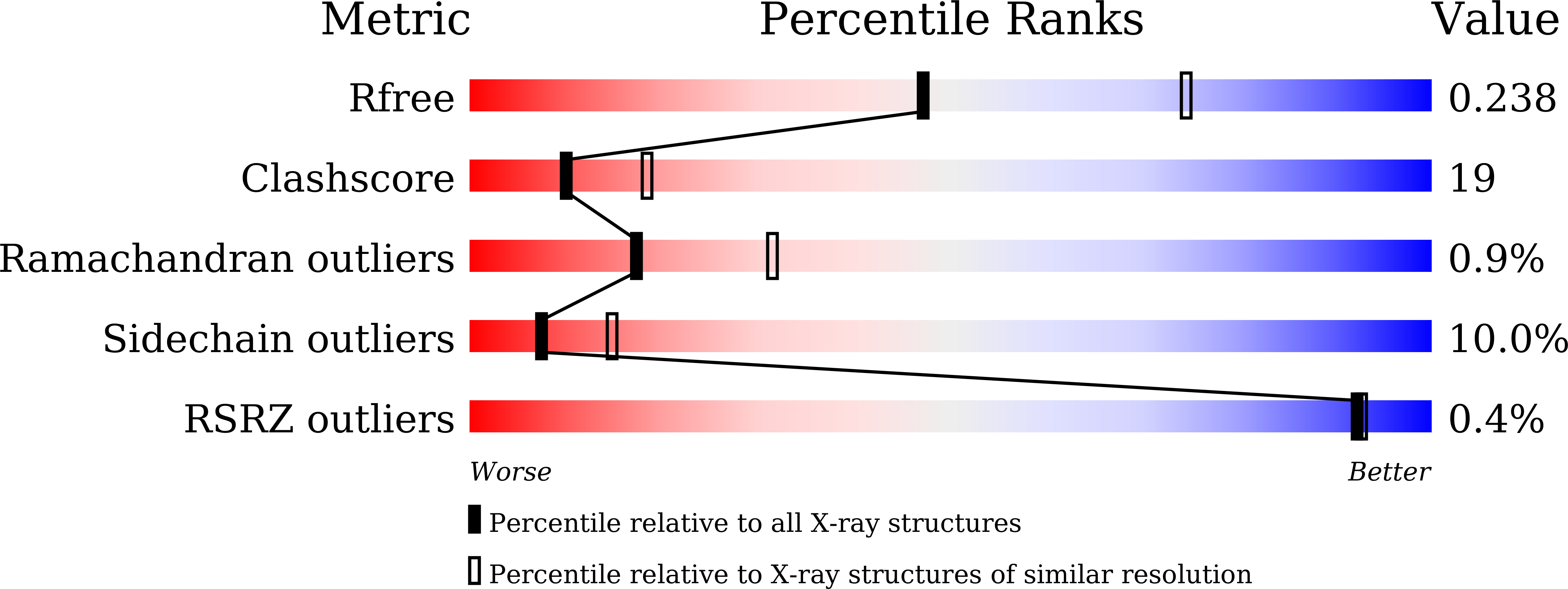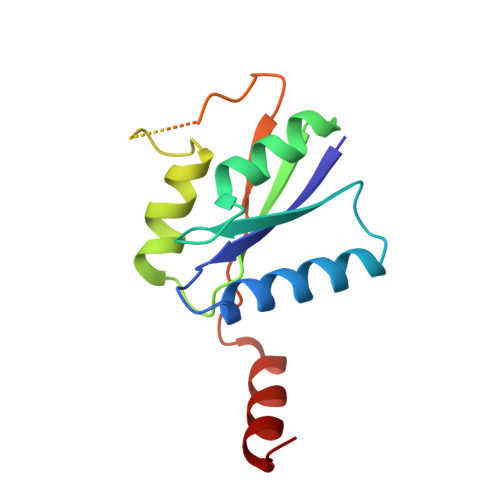The nickel-sirohydrochlorin formation mechanism of the ancestral class II chelatase CfbA in coenzyme F430 biosynthesis.
Fujishiro, T., Ogawa, S.(2021) Chem Sci 12: 2172-2180
- PubMed: 34163982
- DOI: https://doi.org/10.1039/d0sc05439a
- Primary Citation of Related Structures:
6M25, 6M26, 6M27, 6M28, 6M29, 6M2A, 6M2E, 6M2F, 6M2G, 6M2H - PubMed Abstract:
The class II chelatase CfbA catalyzes Ni 2+ insertion into sirohydrochlorin (SHC) to yield the product nickel-sirohydrochlorin (Ni-SHC) during coenzyme F430 biosynthesis. CfbA is an important ancestor of all the class II chelatase family of enzymes, including SirB and CbiK/CbiX, functioning not only as a nickel-chelatase, but also as a cobalt-chelatase in vitro . Thus, CfbA is a key enzyme in terms of diversity and evolution of the chelatases catalyzing formation of metal-SHC-type of cofactors. However, the reaction mechanism of CfbA with Ni 2+ and Co 2+ remains elusive. To understand the structural basis of the underlying mechanisms and evolutionary aspects of the class II chelatases, X-ray crystal structures of Methanocaldococcus jannaschii wild-type CfbA with various ligands, including SHC, Ni 2+ , Ni-SHC, and Co 2+ were determined. Further, X-ray crystallographic snapshot analysis captured a unique Ni 2+ -SHC-His intermediate complex and Co-SHC-bound CfbA, which resulted from a more rapid chelatase reaction for Co 2+ than Ni 2+ . Meanwhile, an in vitro activity assay confirmed the different reaction rates for Ni 2+ and Co 2+ by CfbA. Based on these structural and functional analyses, the following substrate-SHC-assisted Ni 2+ insertion catalytic mechanism was proposed: Ni 2+ insertion to SHC is promoted by the support of an acetate side chain of SHC.
Organizational Affiliation:
Department of Biochemistry and Molecular Biology, Graduate School of Science and Engineering, Saitama University Shimo-Okubo 255 Sakura Saitama 338-8570 Japan tfujishiro@mail.saitama-u.ac.jp +81-48-858-9293.














